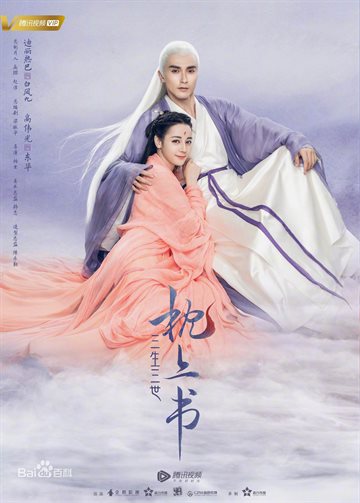109 video, Tandai: China's
仙剑奇侠传3 / 60fps版
Chinese Paladin 3 is a Chinese television series adapted from the video game of the same title, and, because of an added time travel concept allowing the protagonist from Chinese Paladin (2005) to appear in the setting decades before the events of the first. It was first released on television stations in mainland China, Taiwan, Malaysia and Singapore in 2009. Chinese Paladin 2 was not filmed because the producers felt that the third game had a much stronger story than the second.
胡歌 / 刘亦菲
The Nan Zhao kingdom is brainwashed by the chief of a moon-worshiping cult who forces the King to sentence his Queen (Sun Li) to death, claiming that she is a demon. In reality, the queen is the descendant of Nui Wa goddess. The evil chief unleashes a water demon and the queen sacrifices herself to save her people from the demon. Before she sacrifices, she asks Jiu Zu...<!-- --> <a class="ipc-link ipc-link--baseAlt" role="button" tabindex="0" aria-disabled="false" data-testid="plot-read-all-link" href="plotsummary?ref_=tt_ov_pl">Read all</a>
高清修复版 目前最清晰 / 央视94版三国演义
In an age of turmoil, heroes will rise. . . It is the end of the 2nd Century and China is in a state of turmoil. The land is divided by warlords and the country is facing famine, droughts, and invasion from bordering tribes. On top of the problems the country is facing, Zhang Jiao and his brothers begin to rebel against the Han, while advocating the arrival of a new era, the era of the "Yellow Dragon," implying that if people followed him, they would lead prosperous lives. Thousands of desperate villagers flocked to follow Zhang Jiao as they raided government offices and plundered towns and villages alike in protest of heavy taxation, wearing only a "yellow turban" on their heads. As their strengths and numbers grew, the "Yellow Turbans" overthrew some of the Imperial Court's best generals and strongest forces. Concerned for their capital in Luo Yang and for the Han empire, the Imperial Court immediately constructed an "alliance" by requesting volunteers across the country to settle the rebellion. Three distinct generals were recruited - Liu Bei, Cao Cao, and Sun Jian. Together with their own officers, the Yellow Turban rebellion was quickly laid to rest and each of the men involved immediately gained popularity and power with the people. As their powers grew, however, each continued to seek more control of their territories and to unite all of China under one rule. One fought for hegemony. One fought for ambition. One fought for righteousness. Veteran officers and generals who shared the same visions swarmed under each leader. These stalwart souls waged war across the vast expanse of the land and, like blood thirsty demons, cut down any and all that stood in their way. Thus, the romance of the Three Kingdoms begins . . .























